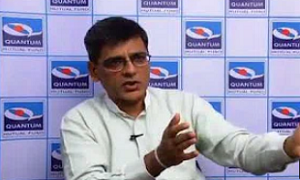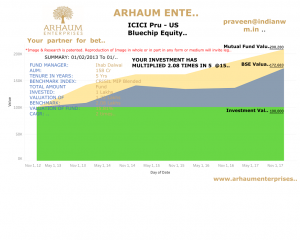With the fund industry brainstorming hard to woo fence-sitting investors into mutual funds, suggestions have been flying to and fro on what mutual fund features should be highlighted in mutual fund advertisements. The power of equities, the benefits of compounding, the wealth-creation potential of SIPs and explaining market risks seem to be some popular choices. But mutual funds offer one big benefit that makes a big difference to investors and leaves all other asset classes in the dust. That feature is anytime liquidity.
Subscribe to the Value Research Insight newsletter
Open-end mutual funds are the only investment product where the vendor offers to buy back your entire investment at a transparent price at the time of your choosing. As investors in open-end funds, we often take anytime liquidity for granted. But we realise its true value only when we try to liquidate our other assets and come up against a wall.
Really illiquid
The last few months post demonetisation have shown us how the property market can malfunction during sudden shocks to the financial system. However, buying or selling apartments or plots of land was never easy even before this event.
Illiquidity is also the primary problem most of us encounter when we try to cash in on the jewellery stashed in our bank lockers. During the six-year bull run in gold from 2006 to 2012, I know of quite a few folks who were keen to lock into their hefty profits by selling their old jewellery. But this entailed suffering a 20-30 per cent discount towards poor caratage, stone charges and wastage levied by the jeweller. Mostly you didn’t receive cash either; you had to buy new jewellery in exchange.
Liquidity at a stiff price
Insurance products, as many sufferers will testify, extract a stiff penalty on anyone who tries to discontinue their investments or sell them before term. ULIPs allow you to exit with a nominal penalty but you are forced to stay locked in them for five years, even if you discontinue paying premiums earlier. Endowment plans, money-back plans and other traditional insurance policies extract extremely stiff surrender charges on any attempt to terminate them before your committed period so much so that most people prefer to sink good money into them year after year, rather than suffer huge losses on surrender.
Red tape
Most of the retirement vehicles where we Indians save towards our sunset years suffer from illiquidity on account of their onerous rules for premature exit. Taking an advance from the EPF account requires you to meet a number of conditions on end-use of that money. The NPS allows you to withdraw a fourth of your contributions before retirement, but that’s only after a ten-year lock-in and compliance with a plethora of nit-picky rules. Ditto with long-term small-savings vehicles such as the NSC and the PPF, which have long lock-ins and convoluted formulae to calculate your redemption amount in case of an early exit.
Fair-weather friend
Instruments such as bonds and bank deposits rank somewhat better on liquidity. Savings bank accounts offer you anytime exit, but they really cannot be counted as ‘investments’ given their measly returns – usually below inflation rates. Bank FDs offer you a premature exit option if you break the deposit, provided you cough up a penalty of 0.5 or 1 percent in interest.
Bonds offer premature exit through the secondary market route and many of the fancied tax-free bonds currently register very decent trading volumes in the debt market. But the Indian bond market is a fair-weather friend. Domestic bond buyers queue up mainly for top-quality bonds and that too mainly when we’re in a bull market (interest rates are falling). Volumes can be quite thin in less favourable market conditions and for issuers who are less than top quality.
Why do you need liquidity?
But why do you need liquidity at all? Surprisingly, quite a few investors make this argument. Many of them actually believe that forced lock-in periods and high penalties for premature exit are good for them because they inculcate saving discipline and force them to be ‘long-term’ oriented. Well, forced lock-in may be okay to live within an assured return product because you know exactly what you are getting when you invest. But it can be quite injurious to your wealth in a market-linked product.
For one, not all managers of market-linked products manage to protect your capital or consistently beat the benchmark. Given that your money manager can really mess up your investment plans in a market-linked product by underperforming the benchmark or making risky moves that expose you to losses, you need the flexibility to switch to better performers at the time of your choice.
Two, the asset-allocation decision that investors make is often based on the relative attractiveness of different asset classes at the time of their investment. But over the long term, these equations can change. So it helps to have the flexibility to exit mid-way based on changing regulatory or market conditions.
Three, exit at a time of your choice is also important for you to optimise returns from volatile market products. Investors who are working towards a goal may also like to take a phased exit to shield their final portfolio value from market volatility.
Finally, all of us may face situations like a family emergency or altered family circumstances which force us to rethink our investment goals and plans. Anytime liquidity is a great attribute for your investment to have in such times.
So, the facility to exit at any time at market price is the big benefit of open-ended mutual funds that the fund industry should shout out from the rooftops, especially when most other investments in India are like that line from the famous Eagles song Hotel California: ‘You can check out anytime you like, but you can never leave.’




